A League of Their Own For All: The Arts Students League
By: Barry Kostrinsky Apr. 01, 2019
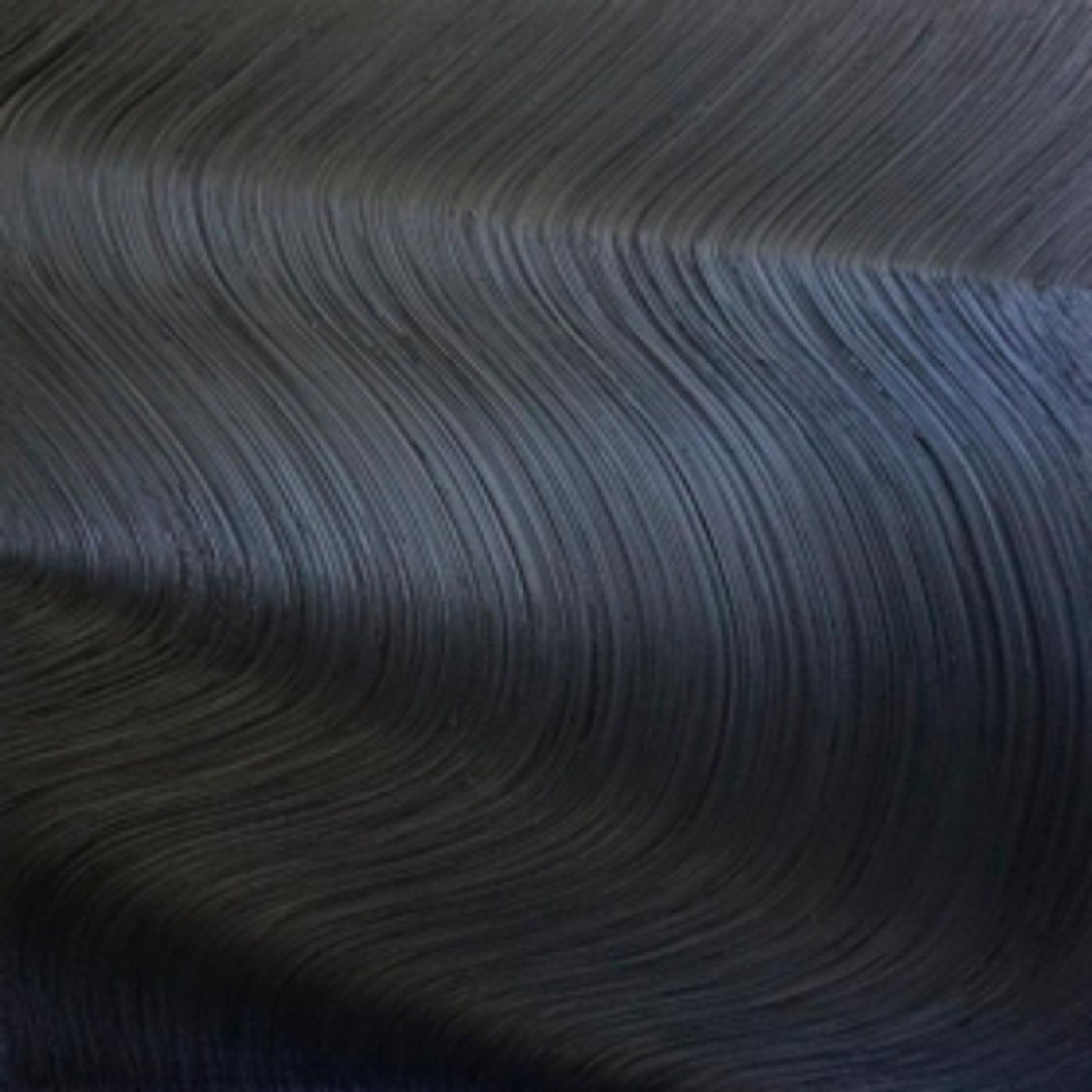
A League of Their Own For All: The Arts Students League
by Barry Kostrinsky
cover image James Austin (detail)
Any grouping of the great teachers and artists that passed through the Arts Students League doors at 215 West 57th street over the last 144 years would rival most Museum exhibitions. The recognizable names that grace the halls of this infamous city institution which to this day reaches over 6000 students a year include Pollack, Rothko, Calder, O'Keeffe, Nevelson, Ai Wei Wei, Judd and Bourgeois as well as many other notable art world Museum favorites. Art is a richly adorned crown, deep and wide and holds more jewels than just the apex the Queen's hat hails. The Art Students League current exhibition "New York Centric" curated by James Little and on view until May 1st brings together many artists working within the large general classification of abstraction worthy of your time and gaze and expresses the depth and range of the many artists that have walked through, taught or sat classes at New York's and indeed America's most venerated art school.
'New York Centric' is as hard to define as it is to say who an American artists is. Just see the list of artists participating in the Whitney Biennial, a show meant to be of American artists. Indeed there is a distinct feel between west coast and east coast artists, well, at least there was in the past. The exhibit focus's on abstraction; what does that mean and does it have meaning today, did it ever? I asked The curator, James Little what he thought the definition of abstraction was. Little offered the frequently held dogma that abstraction is the focus on the non-objective in art. But does not a Goya portrait seek what is beyond the object and alive inside the sitter? Maybe it is best to define abstraction with its opposite, representation. In this way we can agree on the extremes we are talking about without really pinning down what we mean. This is an advantage for if we try and look closer we will find realistic works are abstractions and at times abstract works seek to reveal the surface of things.
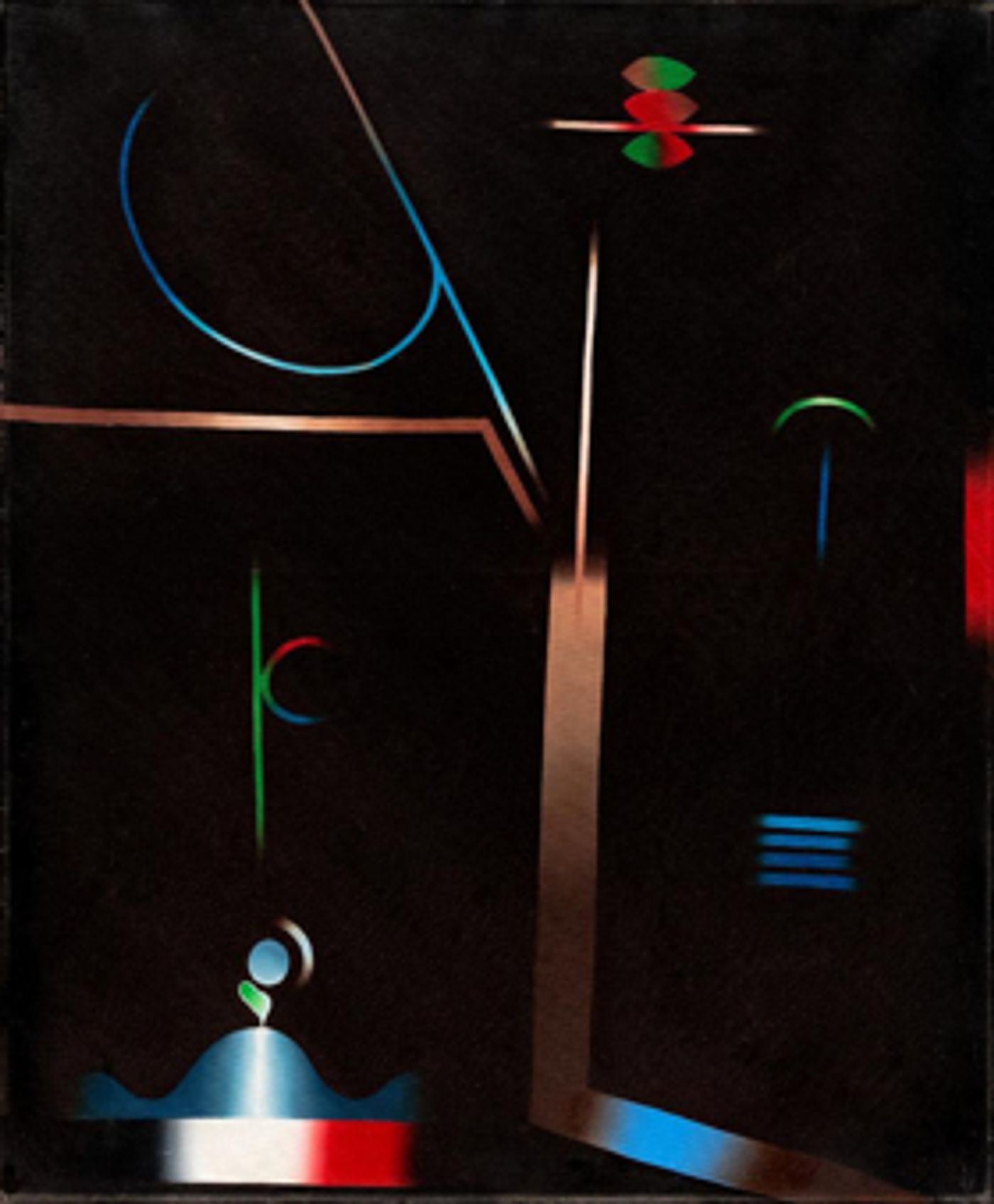
On my walk over to the league at 57th street I passed Jim Dine's homage to the Venus de Milo, the great green arm-less guardian of 6th avenue. I thought about a definition of art or at least an element of a definition of art: No parts can be removed or added to make it better. It had been on my mind as these art thoughts tend to be and I saw the Dine piece as an example of a work that could have many different cuts into it anywhere and it would not be the worse for the ware. Yet I do like the piece very much; definitions of art can be tricky. Throughout my life as I try and come up with them they laugh back at me with incessant counterexamples. One of the nicest things about this world is the synchronicities that appear. They are sort of traffic signs from nature or god if you will that the path is proper, that you are on course. Above Bill Hutson's forms and shapes speak of his own visual language that is balanced and composed and consistent within it's walls reminiscent of later the later organized compositions of Kandinsky.
During a short talk at the beginning of the press tour Ronnie Landfield spoke of his piece in the show and about how in an abstract work there is an internal logic that holds together and that with the addition or the subtraction of an element would fall apart. My day was made; actually the provisions provided by Petrossian made it, I am a simple gut minded man.
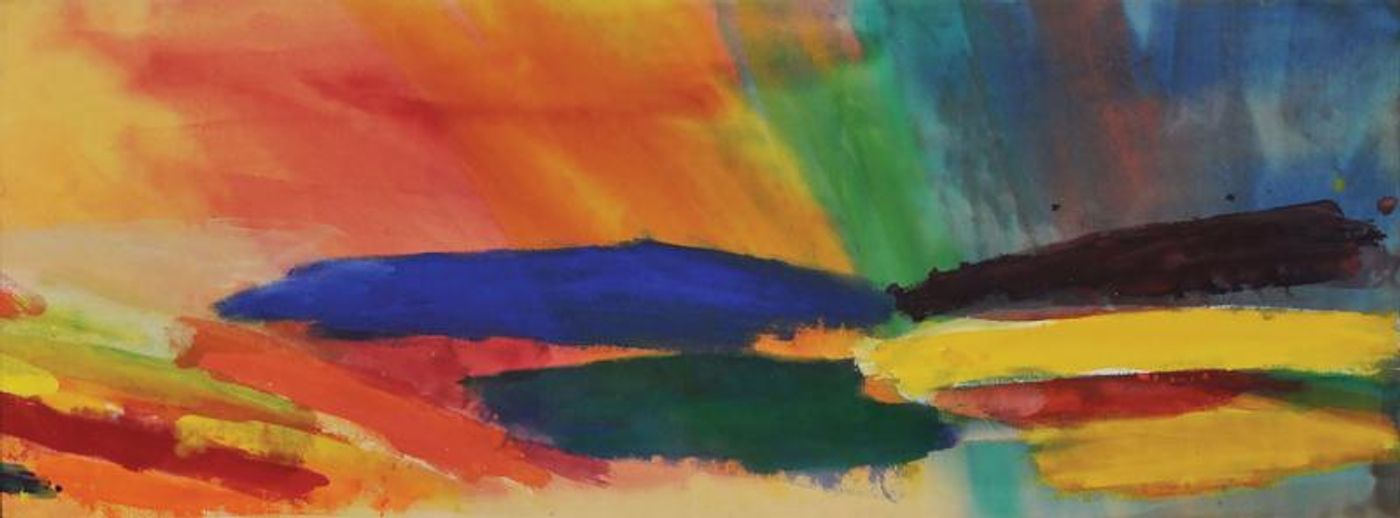
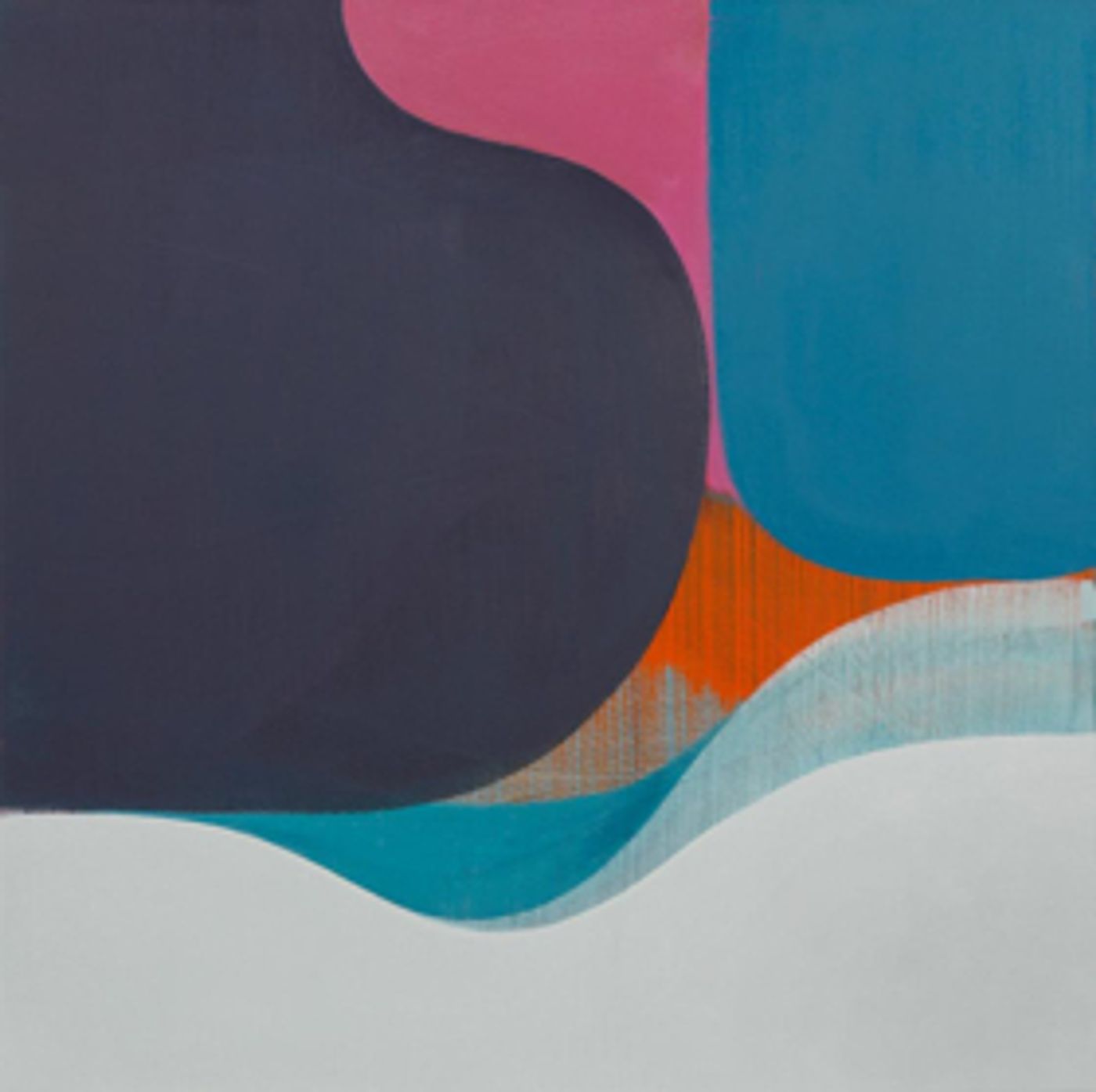
Ronnie (above right) was a great speaker filled with energy and ideas. His work reminds me of Helen Frankenthaler or Morris Louis and no matter what your definition or lack there of about abstraction his work is appealing, emotionally uplifting and touches you somewhere deep below the surface of the self. Indeed the composition reeks of landscape with a landmass and sky denoted by different directional brushstrokes. Margaret Neill's lyrical abstraction (above left) reveals more of a concern for physical volume and delineated outlines and shapes that weigh, press and squeeze space together.
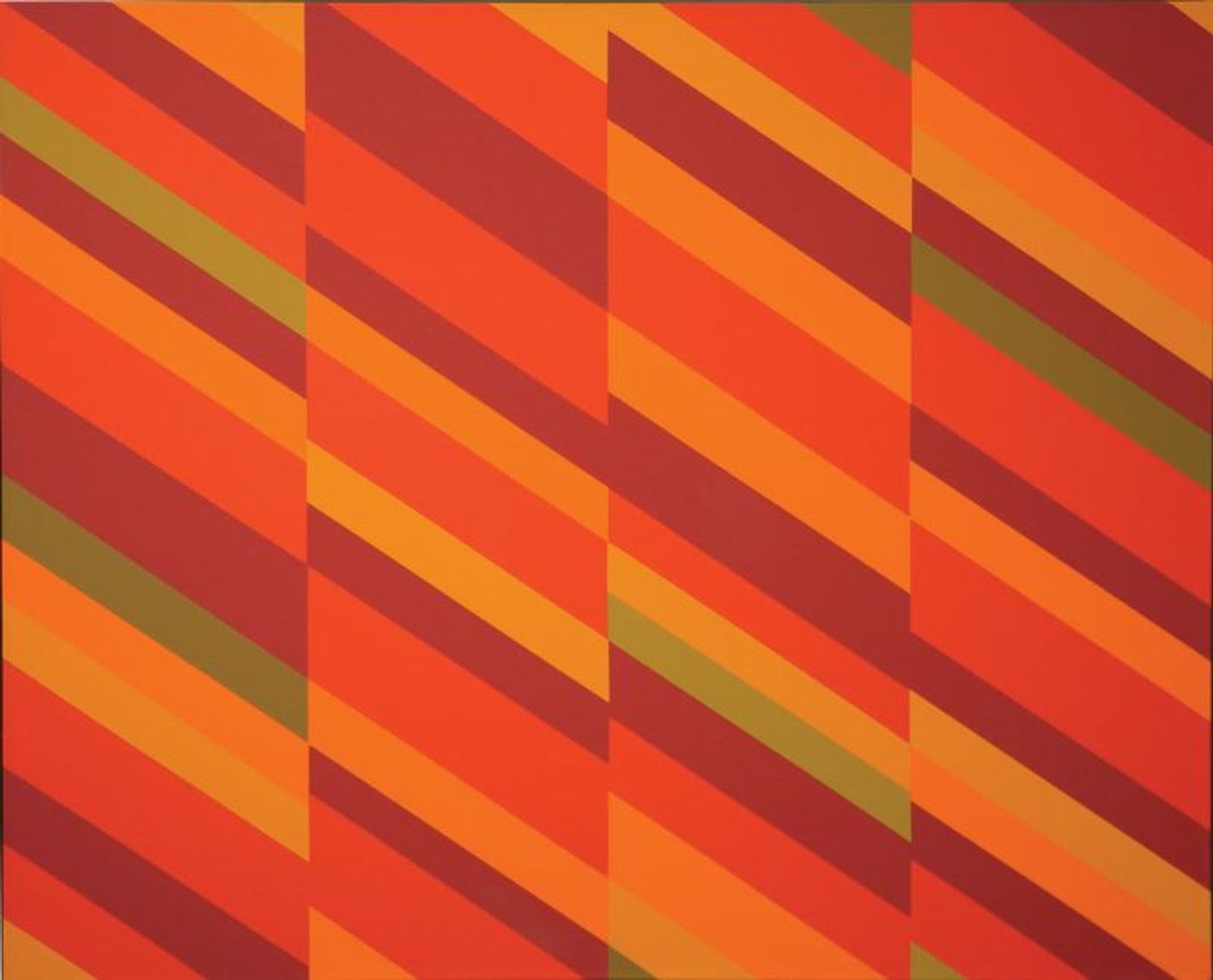
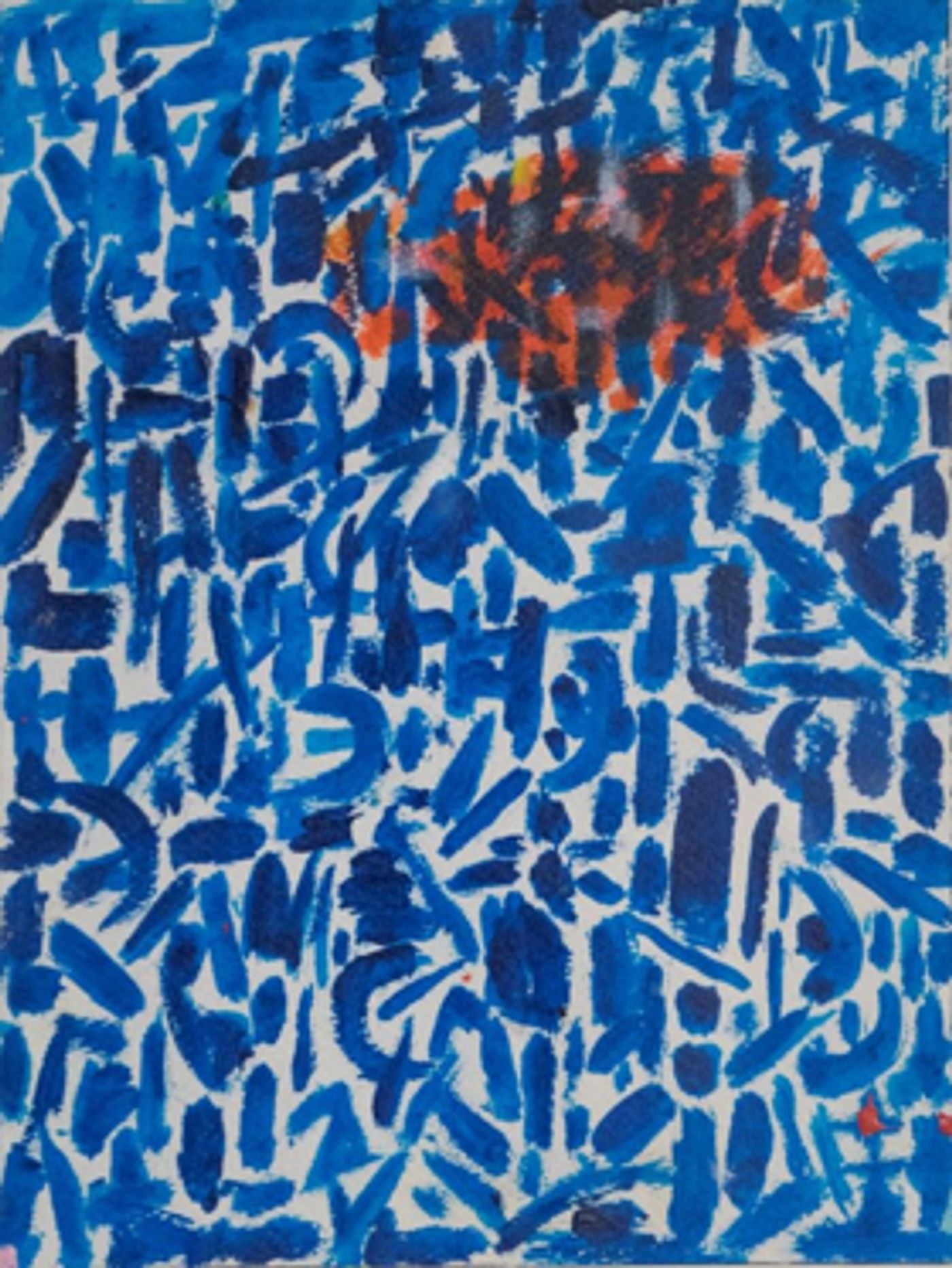
Alma Thomas (left) and James Little (above) the curator and as well an impressive artist in his own right have works in the show that display how varied abstraction can be. James spoke at the onset of the short tour about art as a language. This too is a thought I have been chewing cow-like and cud-like for months feeling I had discovered something deep and unearthed by the masses. Well, obviously it is out of the box or should we say jar to do justice to Pandora's real vessel. Another road sign I was in the right place. Little set the standard that the paintings could not be adorned with objects and become 3-D. This would have been much to the shugrin of Rauschenburg who opened the doors beyond flat painting with his assemblage paintings that included goats, tires, rope, bald eagles and whatever he came upon in the streets of New York or in his imagination. Little's piece in the show holds true to his task and requirements and yet though he spoke of taking depth out of the equation in his work and about letting color just be color there is no doubt the work pushes and pulls back in space just like a Velasquez work would though it only achieves it with diagonal lines and colors that recede at different depths. Though Little's piece work is 'abstract' how can we not see buildings in the vertically delineated forms?
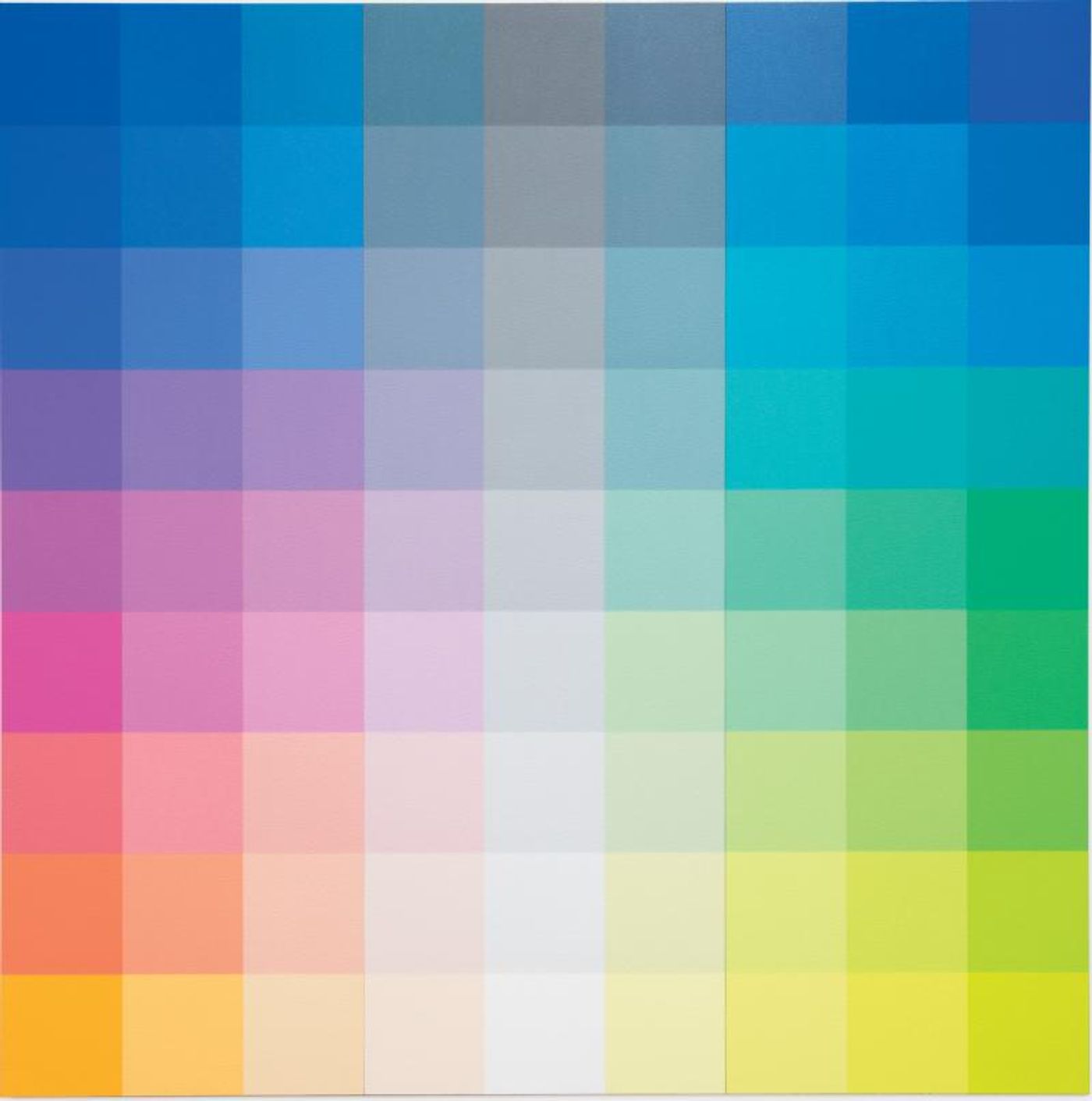
.jpg?format=auto&width=1400)
The works by Robert Swains ( above left) and Gabriele Evertz's ( above right) tends closer to abstraction with formal concern and a color chart-like look in Swain's piece. Both works are clean, fresh and would offer a soft sensual appeal to almost anyone as well as an intellectual scrutability often indigenous to abstraction for some that think to look farther.
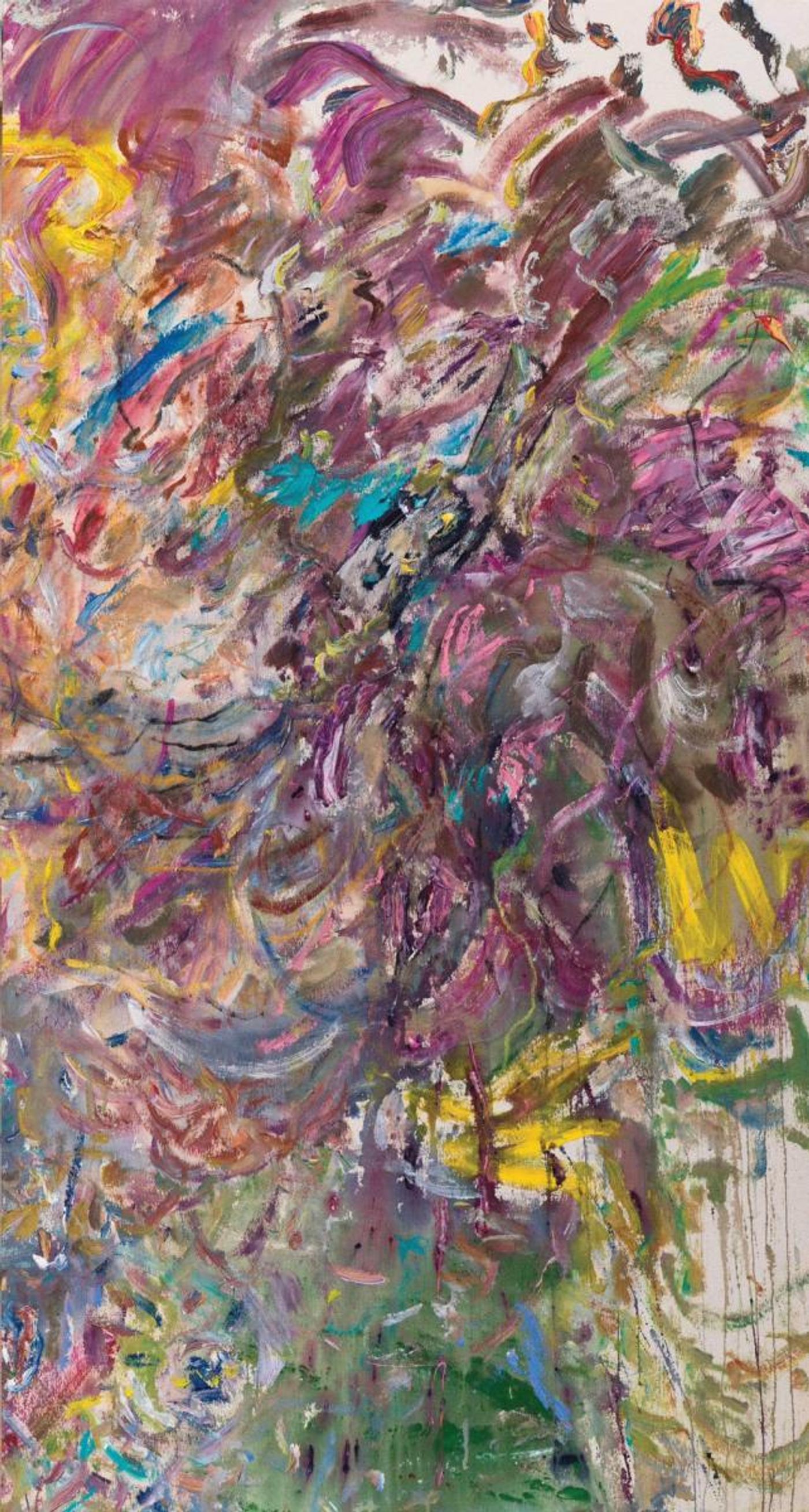
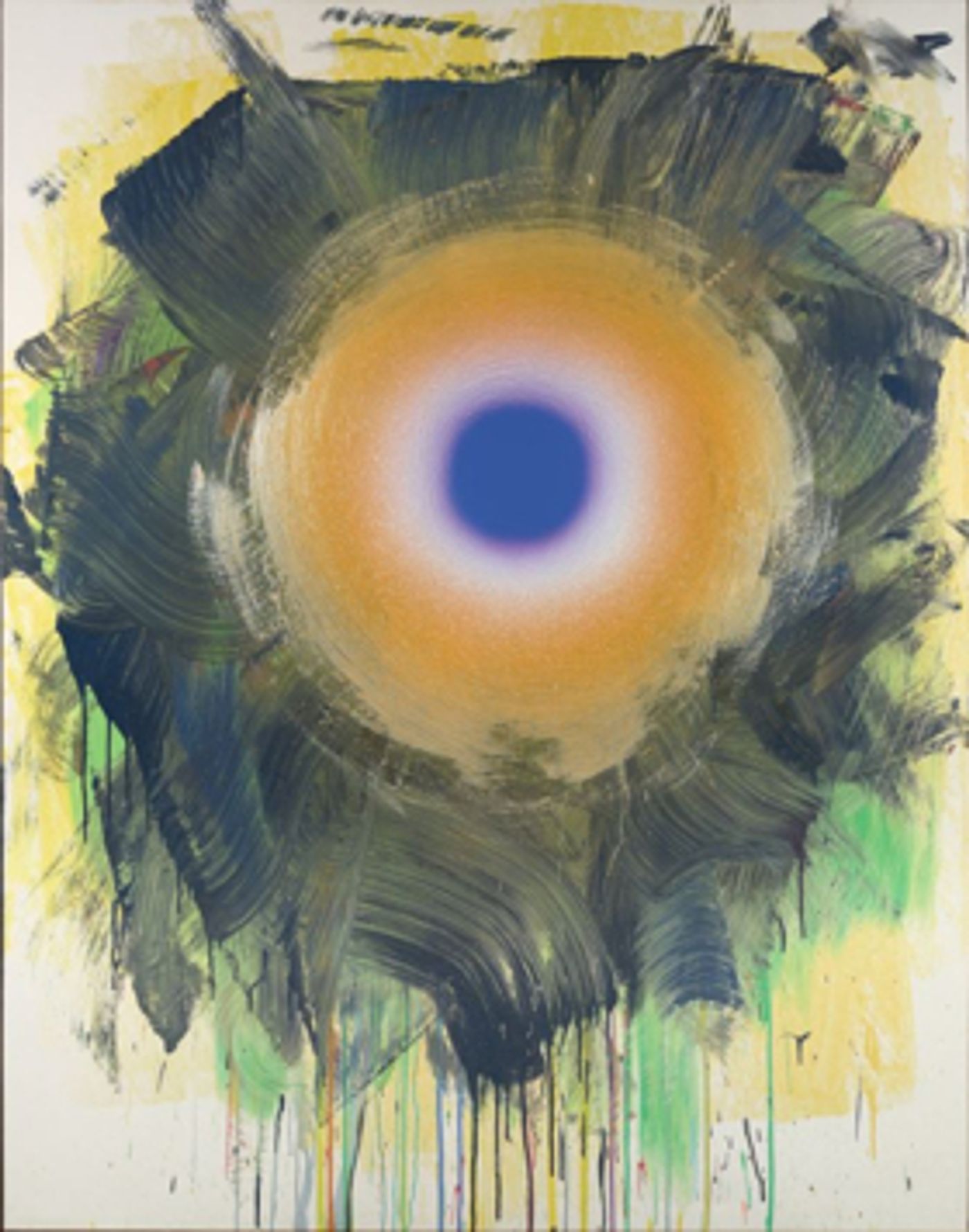
Larry Poons (above right) is the big name in the show and his work does not quite mix with the others. I wonder if it was put in a corner for just this reason or that it fit the space well, though cramped. However it is a great piece with the complexities of a strong cubist piece mixed together with the brush, color and lyrical action of a DeKooning. Dan Christensen's piece reminds me of Adolph Gottlieb. Indeed it is not about copying when works have similarities but more about each artist independently finding the same source or impulse for their art or through their form.
How does any institution survive gentrification and rent escalation over 140 years; They do not. Indeed, the arts students league would not be here today if it was not for the building being given to the league in its' early years by some fat cats we love to hate but as a culture are indebted to.
The great teacher Hans Hofmann taught at the league; yes, he is a great artists too but his weight is best measured by his students, his influence and his writings, not to dismiss his paintings. Upon looking at his work above you can see how influential he was to all the artists in this show. This is why the league is some important.
Today they offer special classes for kids, they have always mixed all levels of artists together in one room, they have teachers who talk and guide and those that stay very quiet and let you explore, everyone chooses who they want to learn from and over the course of years can build there own curriculum. They offer classes in painting, ceramics, sculpting, print making mixed media and more. Paul Ching-Bor is a friend that teaches at the league and he is a great spirit. There is a sense of camaraderie and a college campus feel inside these hallowed halls dotted with multi-colored haired heads bopping about of all ages.
The streets of NYC offer little respite and signs of humanity and speak to the ills money and cold capitalism manifests. Stop inside the league and get away from it all, just a few steps are transportive. Take a class, go to one of the weekly art shows of students work put on by Anki King and her staff or spy the printing class rooms for some great inexpensive art on sale that will beat Home Goods pricing and many of the aesthetics from Chelsea galleries at a minuscule fraction of the cost. The arts Students league is here to stay but it is dead to you unless you enter her unassuming and relatively unadorned holy gates. You can wait many years for other gates, hopefully holy and shiny and not from down below reminiscent of Rodin. You can enter and leave these gates and see NYC fresh from an enlightened view once you do.
Is abstraction a valid term? The range of works in the exhibit vary from texture plays on black canvases to wild color dances. We are all abstractions of ourselves, any art we make is an abstract act, there is no real. Remember Hoffman's great books was titled the search for the real. And so go search, with no end in sight for the road is the way and the lessons abound, follow the signs and you will travel far.
All photographs courtesy of the Art Students League
Videos

